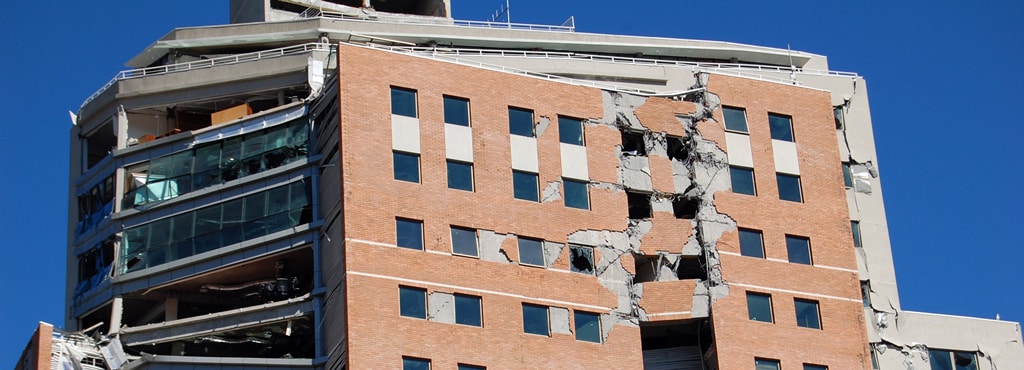A Probable Maximum Loss (PML) seismic risk study is an estimate of damage to a building when it is subjected to earthquake ground shaking. The damage estimate, or PML value, is expressed as a percentage of the total replacement cost of the building. PML assessments are used by mortgage brokers to make lending decisions, insurance brokers to rate assessments, and building owners to make seismic retrofit plans.
A PML seismic risk study must be provided by a licensed engineer that is familiar with building seismic design. The engineer should also have post-earthquake reconnaissance experience and have a detailed familiarity with and working knowledge of ASCE 31 “Seismic Evaluation of Existing Buildings” and ASCE 41 “Seismic Rehabilitation of Existing Buildings”. BOATWRIGHT Consulting Civil Engineers has been providing seismic building design, evaluations, and post-earthquake reconnaissance since 1972.
Our PML risk investigation utilizes the guidelines provided by ASTM 2026 “Standard Guide for Seismic Risk Assessment of Buildings” and ASTM 2557 “Standard Practice for Probable Maximum Loss (PML) Evaluations for Earthquake Due-Diligence Assessments”. These guides provide a uniform approach and a standard of care for the evaluation and classification of risks from earthquake damage. The PML risk study consists of, but is not limited to:
-
- A site visit to evaluate the current condition a building, its structural characteristics, and quality of construction
- A review of any geotechnical reports and analyses of the site, engineering reports, building plans, and building specifications
- An evaluation of seismic loads and capacities of selected systems, elements and connections
- A Level G1 ground motion assessment
- A Level SS1 site stability assessment
- A Level D1 damageability assessment
The BOATWRIGHT Probable Maximum Loss analysis is generated using ST-Risk™, proprietary state-of-the-art software that employs advanced computer modeling technology. ST-Risk™ uses the most current data available, considers a building’s unique strengths and weaknesses that are essential to seismic resilience, the building’s proximity to earthquake faults, the effects of local soil conditions, and integrates over tens of thousands of earthquake motions and variable potential damage to a structure. This generates an estimate of damage that most accurately reflects actual reported losses from earthquakes.
BOATWRIGHT also provides ASCE 41-23 “Seismic Evaluation and Retrofit of Existing Buildings” Tier 1 seismic risk assessments. ASCE 41-23 is the most recent standard for seismic evaluation and retrofit of existing buildings, replacing ASCE 41-13. ASCE 41-23 incorporates significant updates to seismic hazard parameters, analysis procedures, and acceptance criteria, building upon the previous version. These changes are intended to align with the new USGS seismic hazard model and provide updated provisions for various building types and seismicity levels.
The ASCE 41-23 Tier 1 seismic evaluation is an initial seismic assessment of an existing building using ASCE 41-23 checklists tailored to different building types and seismic hazard levels, screening for common potential structural deficiencies without comprehensive mathematical analysis. Tier 1 screening is not intended for detailed retrofit design. The primary goal is to identify areas where a further in-depth investigation (Tier 2 or Tier 3) might be needed.
In summary, the checklist questions are reviewed, potential deficiencies are noted, the results are documented in a written report of findings, and any issues flagged for further evaluation.



